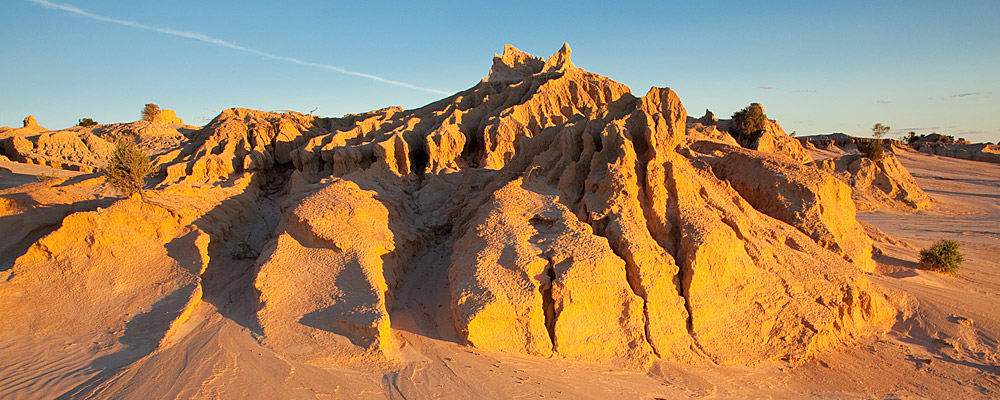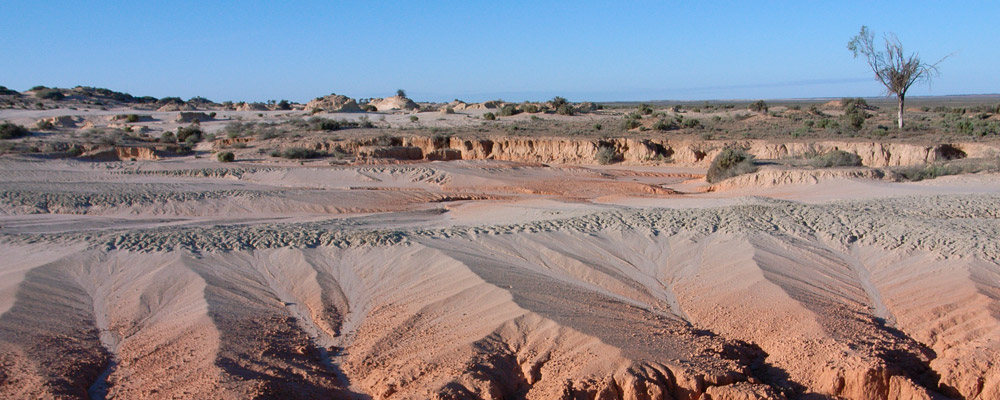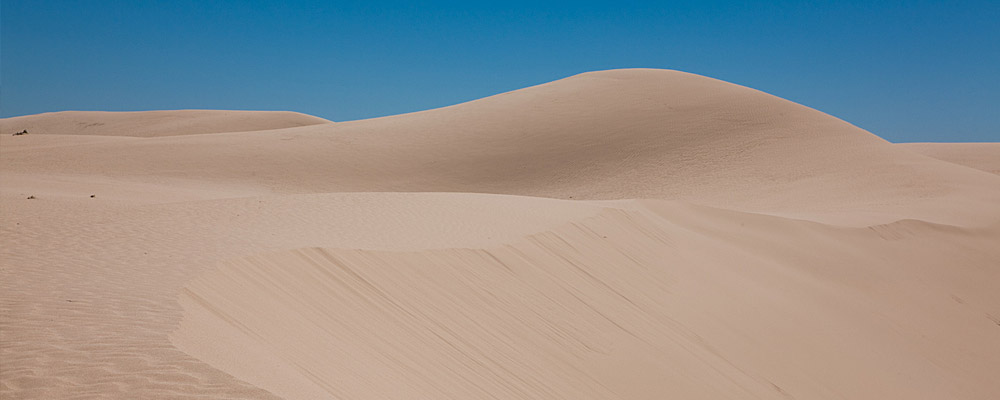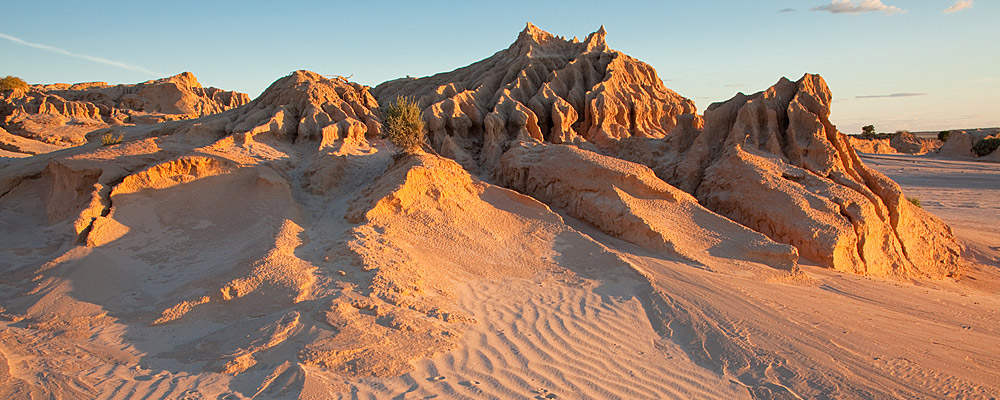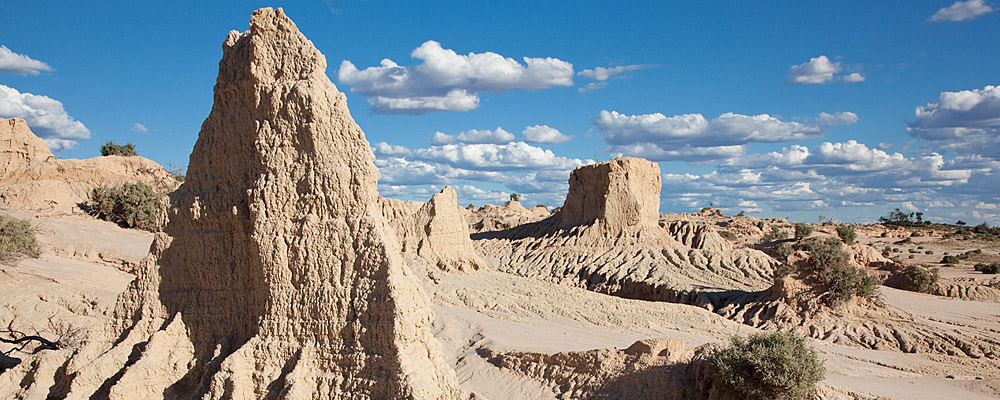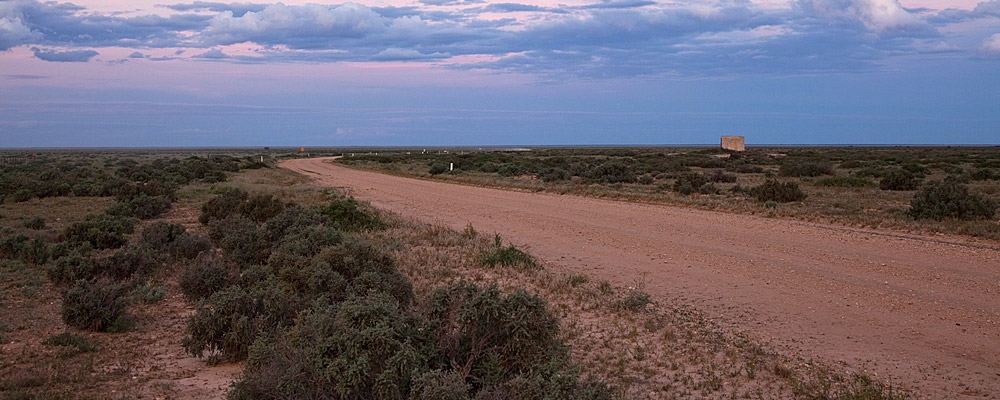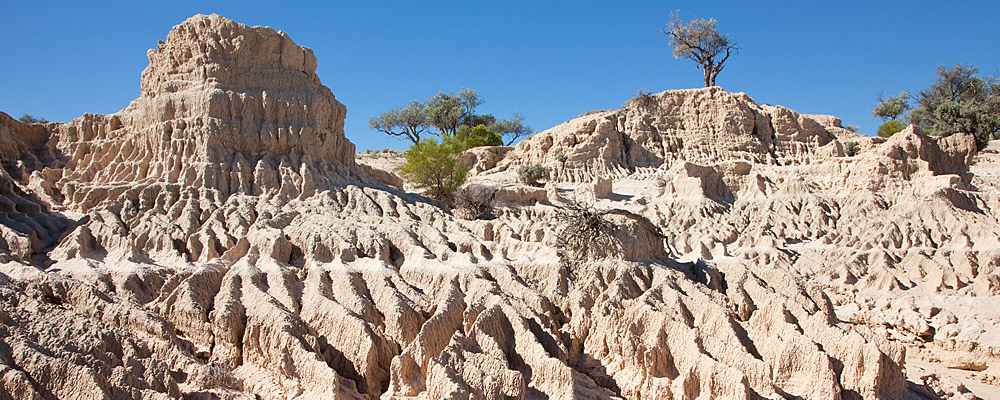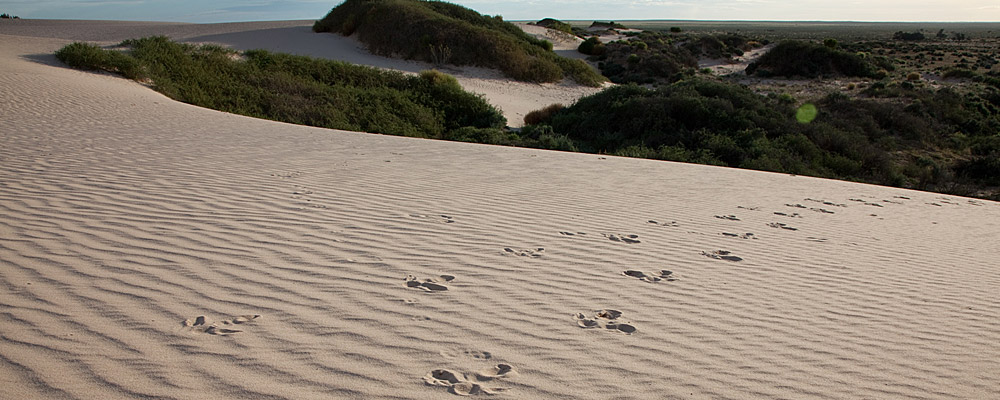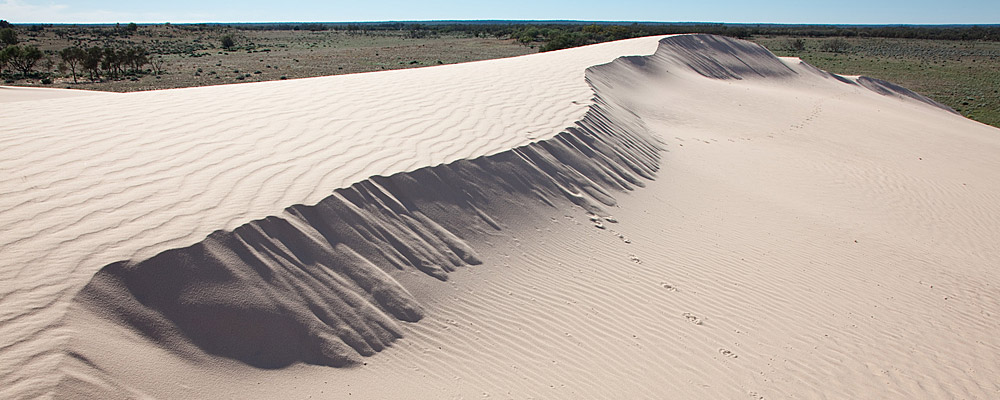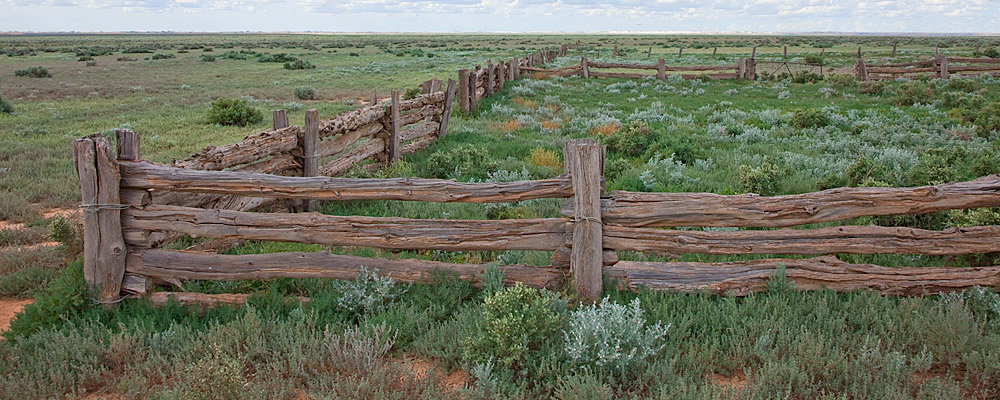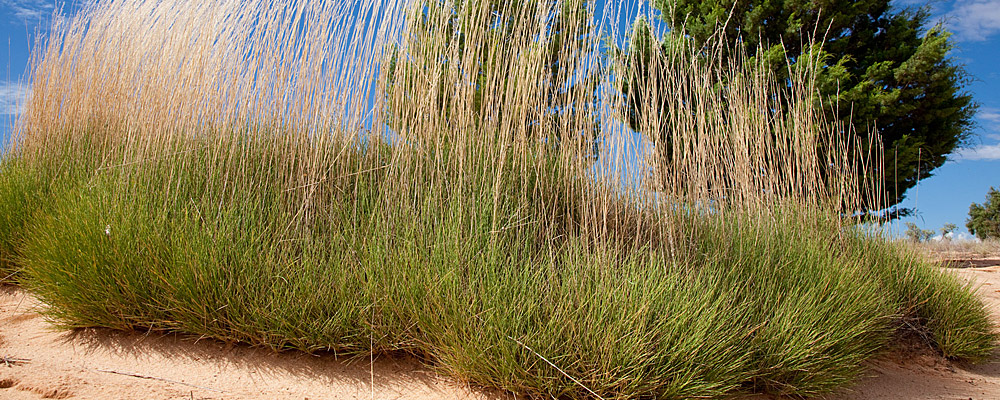Understand Mungo
Ancient Mungo Environments
People in Changing Climates
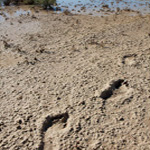
Like all living things, humans have always responded to the climate of the time and the environment they lived in. Over the years changing climates have variously restricted and encouraged human migration and development.
Climate was the midwife to the birth of humanity in Africa. Then a warm and productive climate enabled modern humans to thrive and grow to the extent that they could migrate into new areas. It was possibly the glacial period of cool climate and lower sea levels around 70,000 years ago that allowed people to cross the narrowed sea from north Africa into Arabia. This opened up all of Asia and Europe to human settlement.
After people reached south east Asia, the lower sea level made it possible to cross into Australia. These people must have been proficient with boats and ocean travel, perhaps from a long history of coastal living. Then, when the most recent icefields retreated from North America, humans were able to spread down through the Americas.
Archaeological evidence suggests that Aboriginal people reached Willandra Lakes in a time of plenty. Between 60,000 and 40,000 years ago the lakes were full of both water and life. By around 20,000 years ago the glacial era climate had reached a peak of aridity, and no doubt the human population came under a great deal of stress.
People who study the broad sweep of human history see it as no accident that worldwide agriculture, cities, civilisation and nations developed during the last 10,000 years of relatively benign and stable climate. These advances were fuelled at first by the fertile glacial soils of Europe and Asia, and later by the fossil fuels and other resources of all continents. Today, after 10,000 years of relative stability, the climate is on the move again.
How does the climate change?
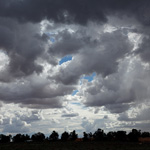
The Earth's climate is produced by a complex interaction of many factors. These include the amount of energy coming from the sun, shifts in the Earth's orbit, geological events like volcanic eruptions and the movement of continents, and the pattern of ocean currents and temperatures.
One of the most powerful drivers of the global climate is the composition of the atmosphere, especially the amount of carbon dioxide. The atmosphere is partly a product of life on Earth and continues to be intimately bound up with life, because various organisms both produce and absorb carbon dioxide, oxygen and other gases. Since the industrial revolution, humans have become another atmospheric factor by releasing large quantities of carbon dioxide that were previously stored in the form of coal, oil and standing forests.

